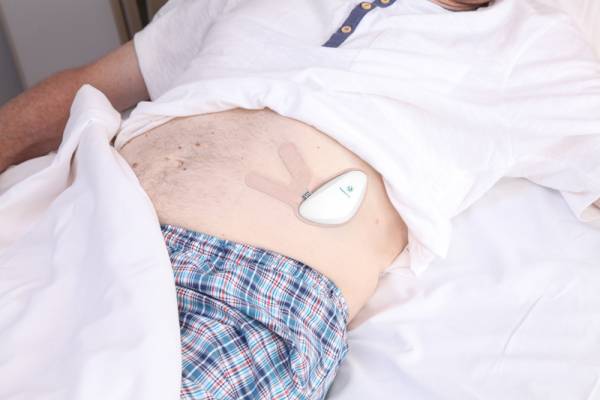Respiratory failure occurs when PaO2 <8.0 kPa (60 mmHg)[1]
Manual measurement of Respiratory Rate (mRR) can underestimate the severity of the patient’s status as RR may be compensating for poor gas exchange
Electronic monitoring of Respiratory Rate (eRR) can indicate a patient trying to compensate up to 12 hours earlier than the standard of care (mRR and SpO2 alone). [11]
Where Type 1 Respiratory failure is Low Oxygen <8.0 kPa (60 mmHg) and normal CO2 <6.0 kPa (45mmHg)
Type 2 Respiratory failure is High PaCO2 (>6.0 kPa (45 mmHg) with potential for Loq PaO2 also <8.0 kPa (60 mmHg).[2]
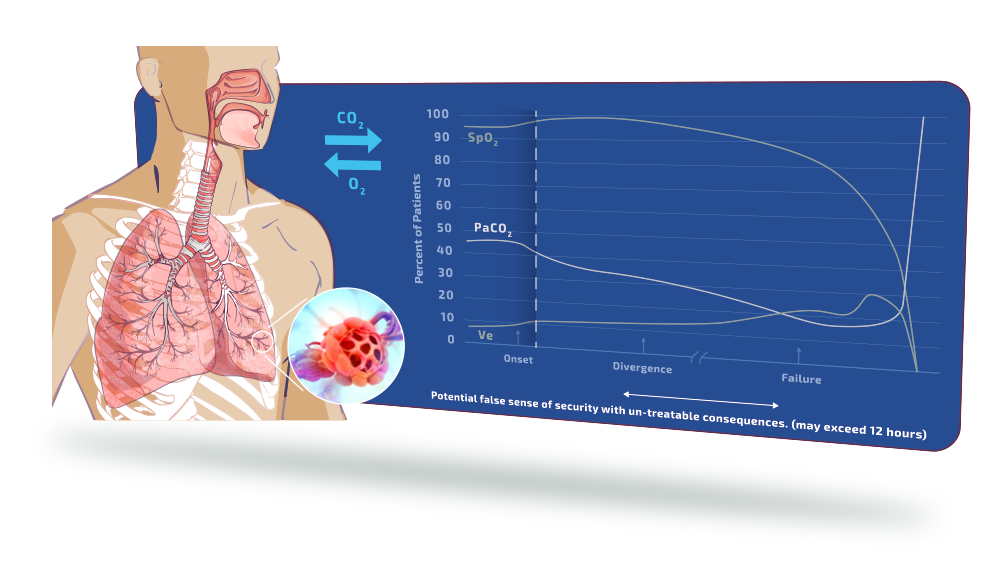
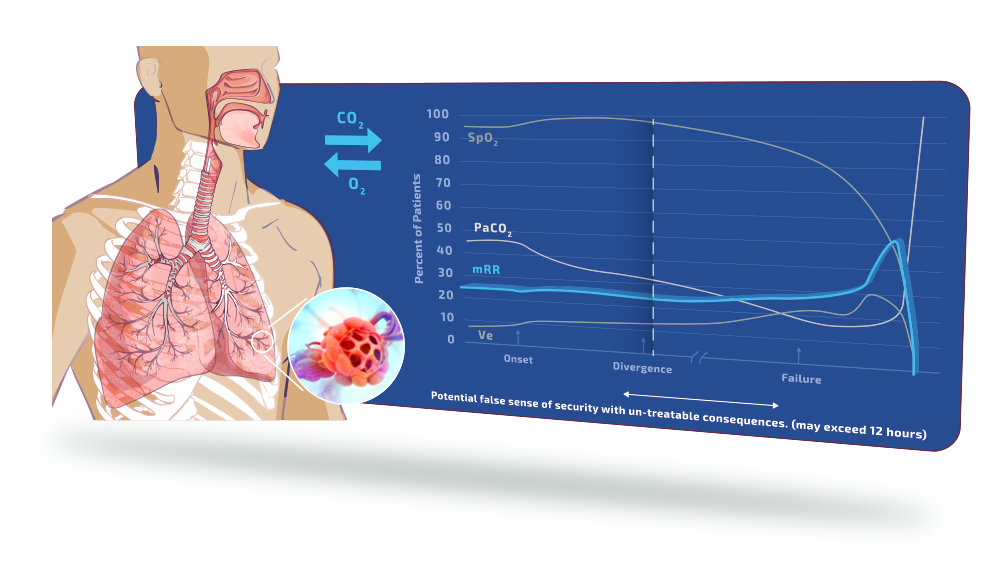
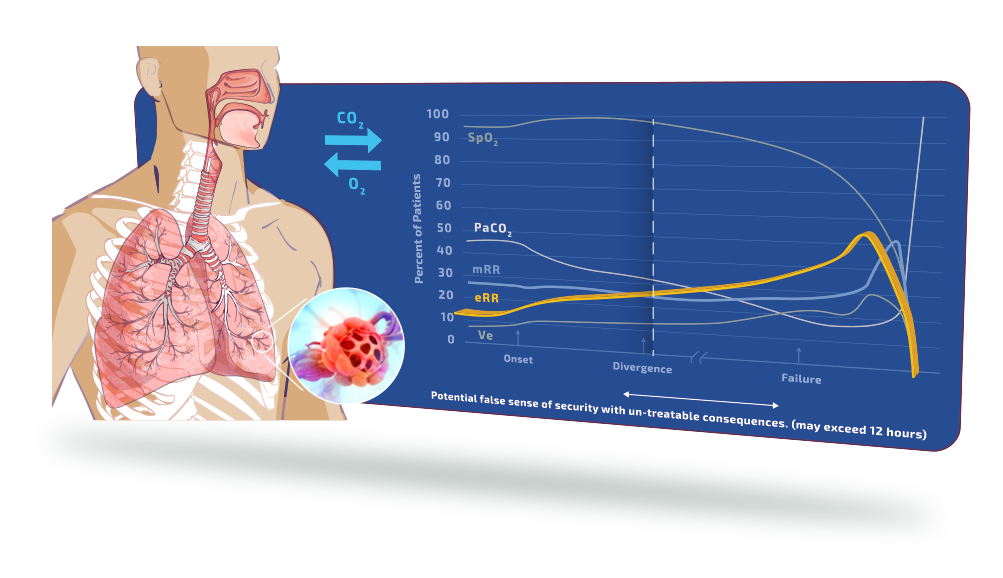
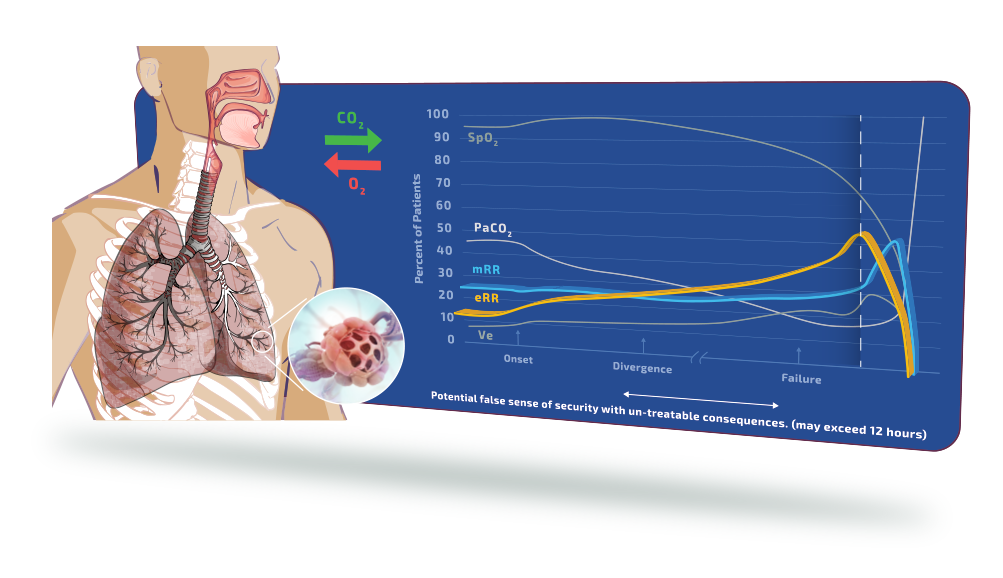
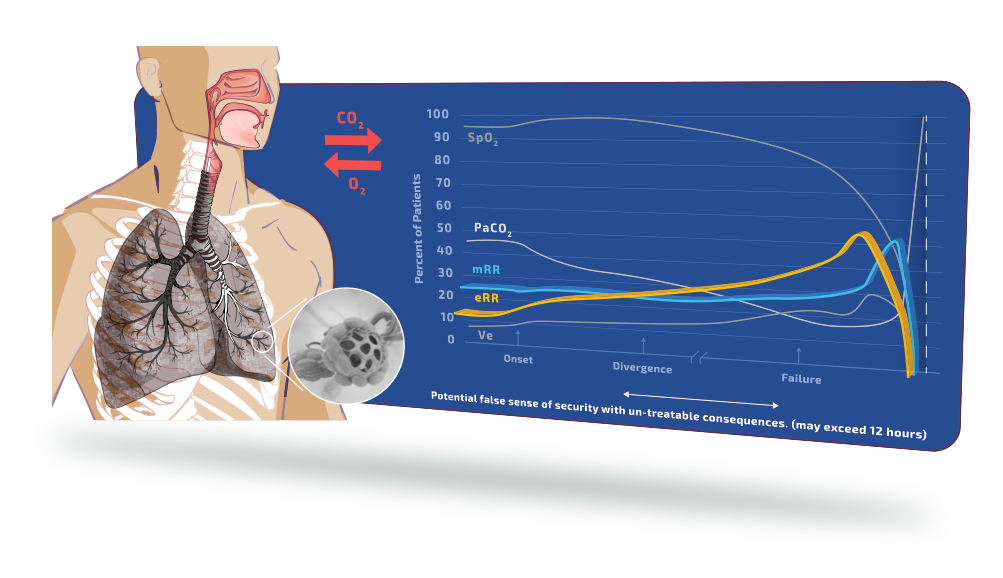
Continuous and motion tolerant monitoring of respiratory rate (cRR) can trigger timely and meaningful interventions 12 hours before the deterioration event[2]
